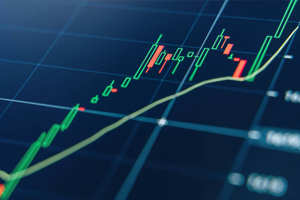Risks and benefits of investing in altcoins
Unlock the potential of altcoin investments with our comprehensive guide Explore risks, benefits, and strategies for informed decision-making in the dynamic cryptocurrency market
Welcome to the comprehensive guide on the risks and benefits of investing in altcoins. In the dynamic landscape of cryptocurrency, altcoins, or alternative coins, have emerged as intriguing investment options beyond the well-known Bitcoin. As the market continues to evolve, navigating the complexities of altcoin investments requires a deep understanding of various factors influencing their success or failure.
This guide aims to provide investors, both novice and experienced, with valuable insights into the diverse ecosystem of altcoins. We will explore the fundamental aspects of altcoin investments, covering topics such as project analysis, team credibility, regulatory considerations, market trends, and risk management. By delving into these key areas, readers will gain the knowledge needed to make informed decisions in the ever-changing world of cryptocurrency.
Whether you are seeking to expand your crypto portfolio, explore new investment opportunities, or simply enhance your understanding of the altcoin market, this guide is designed to be your comprehensive resource. Let's embark on this journey together, unraveling the intricacies of altcoin investments and equipping you with the tools to navigate this dynamic and exciting realm.

The Landscape of Altcoin Investments
Understanding Altcoins and Their Diverse Ecosystem
Explore the definition and variety of altcoins, encompassing all cryptocurrencies other than Bitcoin. Dive into the unique features and purposes of different altcoins, including utility tokens, privacy coins, and smart contract platforms. Discuss how the diverse altcoin ecosystem contributes to the overall cryptocurrency market.
Potential Benefits of Investing in Altcoins
Delve into the potential advantages that altcoin investments offer to discerning investors. Discuss factors such as higher growth potential compared to established cryptocurrencies, early entry opportunities, and the ability to support innovative blockchain projects. Highlight the diversification benefits that altcoins can bring to an investment portfolio.
Risks Associated with Altcoin Investments
Examine the inherent risks linked to investing in altcoins. Discuss factors like volatility, liquidity challenges, and susceptibility to market sentiment. Address the potential for regulatory uncertainties impacting specific altcoins and the heightened risk of price manipulation in smaller market cap coins. Provide insights into risk mitigation strategies for investors.
Factors Influencing Altcoin Prices
Market Sentiment and Investor Behavior
Explore the impact of market sentiment and investor behavior on altcoin prices. Discuss how news, social media, and community perception can significantly influence the value of altcoins. Analyze common patterns in investor sentiment and how it correlates with price movements, providing readers with a comprehensive understanding of market dynamics.
Technological Developments and Innovations
Examine the role of technological advancements in shaping the value of altcoins. Discuss how upgrades, new features, and innovative developments within blockchain projects can impact the perceived value and market demand for specific altcoins. Highlight the importance of staying informed about technological progress when considering investments.
Regulatory Changes and Legal Considerations
Discuss the significance of regulatory changes in the cryptocurrency space and their impact on altcoin prices. Explore how legal considerations, such as government regulations and compliance measures, can affect investor confidence and market dynamics. Provide guidance on staying updated on regulatory developments for informed investment decisions.
Strategies for Successful Altcoin Investing
Diversification and Portfolio Management
Guide investors on the importance of diversification in altcoin portfolios. Discuss strategies for balancing risk and reward through a diversified approach. Explore portfolio management techniques, including setting allocation limits, risk assessment, and adjusting positions based on market conditions.
Research and Due Diligence Practices
Emphasize the critical role of research and due diligence in successful altcoin investing. Provide insights into evaluating whitepapers, understanding project fundamentals, and assessing the credibility of development teams. Guide readers on the importance of conducting thorough research before committing to any altcoin investment.
Staying Informed about Market Trends
Highlight the significance of staying informed about market trends and developments in the cryptocurrency space. Discuss the value of regularly monitoring news, industry forums, and social media for real-time insights. Encourage investors to adapt their strategies based on emerging trends to stay ahead in the dynamic altcoin market.
Common Questions about Altcoin Investments
Q&A: How do Altcoins Differ from Bitcoin?
Address common queries regarding the distinctions between altcoins and Bitcoin. Discuss factors such as technological differences, use cases, and market positioning to provide readers with a comprehensive understanding of the unique attributes of altcoins.
Q&A: What Risks Should Investors Consider Before Venturing into Altcoins?
Offer in-depth insights into the risks associated with altcoin investments. Discuss market volatility, regulatory uncertainties, and potential pitfalls, providing readers with a comprehensive risk assessment to make informed investment decisions.
Q&A: Can Altcoin Investments Provide Higher Returns Than Traditional Investments?
Explore the potential for higher returns in altcoin investments compared to traditional investment vehicles. Discuss the risk-return profile of altcoins and provide realistic expectations for investors considering altcoins as part of their overall investment strategy.
Understanding Altcoins and Their Diverse Ecosystem
Altcoins, short for alternative coins, represent a vast and diverse category of cryptocurrencies beyond the renowned Bitcoin. This section aims to provide a comprehensive breakdown of altcoins and their multifaceted ecosystem.
1. Definition of Altcoins:
Altcoins encompass all cryptocurrencies other than Bitcoin. These coins vary widely in terms of design, functionality, and purpose. Examples include Ethereum, Ripple, Litecoin, and countless others, each offering unique features and use cases.
2. Categorization of Altcoins:
Altcoins can be categorized based on their intended applications. This includes utility tokens that serve specific functions within decentralized platforms, privacy coins designed for enhanced transaction anonymity, and smart contract platforms enabling programmable contracts on the blockchain.
3. Use Cases and Functions:
Explore the diverse use cases of altcoins, from facilitating peer-to-peer transactions to powering decentralized applications (DApps). Some altcoins focus on providing efficient cross-border payments, while others prioritize smart contract functionality, enabling the execution of self-executing contracts without intermediaries.
4. Market Capitalization and Ranking:
Discuss the significance of market capitalization in evaluating the prominence of different altcoins. Explain how rankings on cryptocurrency exchanges are often based on market capitalization, providing investors with insights into the perceived value and popularity of specific altcoins.
5. Risks and Rewards:
Highlight the inherent risks and potential rewards associated with investing in altcoins. Discuss the higher volatility often observed in smaller market cap coins and the potential for substantial returns. Emphasize the importance of a balanced approach, considering both the risks and rewards when engaging in altcoin investments.
6. Impact on the Overall Cryptocurrency Market:
Examine how the presence and activities of altcoins impact the broader cryptocurrency market. Discuss their role in promoting innovation, competition, and market diversity. Explore how successful projects among altcoins can influence the overall trajectory and perception of the cryptocurrency space.
7. Challenges and Opportunities:
Address the challenges faced by altcoins, such as regulatory uncertainties, market saturation, and competition. Simultaneously, explore the opportunities for growth and development within this dynamic ecosystem, including the potential for groundbreaking technological advancements and disruptive innovations.
By comprehensively understanding altcoins and their diverse ecosystem, investors and enthusiasts can navigate this complex landscape more effectively, making informed decisions aligned with their investment goals and risk tolerance.
Potential Benefits of Investing in Altcoins
Explore the various potential benefits that investing in altcoins can offer to discerning investors. This section provides a comprehensive breakdown of the advantages associated with engaging in the dynamic world of altcoin investments.
1. Higher Growth Potential:
Altcoins often present higher growth potential compared to more established cryptocurrencies like Bitcoin. Due to their lower market capitalization and evolving nature, successful altcoin projects have the potential for substantial price appreciation, offering investors opportunities for significant returns.
2. Early Entry Opportunities:
Investing in altcoins provides investors with early entry opportunities into innovative blockchain projects. Being involved in the early stages of a promising altcoin can offer the advantage of securing tokens at lower prices before they gain widespread recognition and value in the market.
3. Support for Innovative Blockchain Projects:
Altcoins frequently represent cutting-edge blockchain projects that aim to address specific industry challenges or introduce novel functionalities. Investing in these projects allows investors to actively support and contribute to the development of innovative blockchain solutions with the potential to disrupt traditional industries.
4. Diversification Benefits:
Altcoins contribute to portfolio diversification by offering a range of projects with distinct use cases. Diversifying an investment portfolio across different altcoins can help mitigate risks associated with the volatility of individual assets, providing a more balanced and resilient investment strategy.
5. Participation in Emerging Technologies:
Investing in altcoins allows individuals to participate in emerging technologies and trends within the cryptocurrency space. Altcoins often pioneer advancements such as privacy-focused transactions, decentralized finance (DeFi) applications, and scalable smart contract platforms, providing investors exposure to the forefront of blockchain innovation.
6. Accessibility and Affordability:
Many altcoins are priced more affordably than major cryptocurrencies like Bitcoin, making them accessible to a broader range of investors. This affordability allows individuals with varying budget sizes to participate in the cryptocurrency market and potentially benefit from the growth of specific altcoins.
7. Potential for Higher Returns:
While associated with higher risks, altcoins offer the potential for higher returns compared to traditional investment vehicles. Successful identification of promising altcoin projects and effective timing of market entry can lead to significant profits, attracting investors seeking opportunities for above-average returns.
By recognizing and understanding these potential benefits, investors can make informed decisions when considering the inclusion of altcoins in their investment portfolios. It's essential to balance the allure of potential rewards with a thorough understanding of the associated risks, fostering a strategic and well-informed approach to altcoin investments.
Risks Associated with Altcoin Investments
1. Market Volatility:
Altcoins are known for their higher volatility compared to more established cryptocurrencies. Rapid price fluctuations can pose challenges for investors, leading to potential losses. Understanding and managing market volatility is crucial for those engaging in altcoin investments.
2. Liquidity Challenges:
Smaller market cap altcoins may experience liquidity challenges, making it challenging for investors to buy or sell assets quickly without significantly impacting the market price. Illiquidity can result in higher transaction costs and difficulties in executing trades as desired.
3. Regulatory Uncertainties:
Altcoins, especially newer projects, may face regulatory uncertainties. Evolving regulations and legal frameworks can impact the value and viability of specific altcoins. Investors need to stay informed about regulatory developments and assess the associated risks before committing to altcoin investments.
4. Susceptibility to Market Sentiment:
Altcoins are often influenced by market sentiment, news, and social media trends. Positive or negative perceptions can lead to abrupt price changes, making altcoins susceptible to irrational market behavior. Investors must be aware of the potential impact of sentiment-driven market dynamics.
5. Specific Project Risks:
Each altcoin project carries its own set of risks. These may include development challenges, security vulnerabilities, or governance issues. Thoroughly researching and understanding the fundamentals of a specific altcoin project is essential for mitigating project-specific risks.
6. Limited Track Record:
Newer altcoins may have a limited track record compared to more established cryptocurrencies. This lack of historical data makes it challenging to assess the long-term performance and stability of a particular altcoin, adding an element of uncertainty for investors.
7. Price Manipulation in Smaller Market Cap Coins:
Smaller market cap altcoins are susceptible to price manipulation, commonly known as "pump and dump" schemes. Ill-intentioned actors may artificially inflate the price of a coin and then sell off their holdings, leading to significant losses for unsuspecting investors. Due diligence is crucial to identifying potential risks associated with price manipulation.
8. Technology Risks and Bugs:
Altcoins may face technology-related risks, including software bugs, vulnerabilities, or flaws in the underlying blockchain. Technical issues can compromise the security and functionality of an altcoin, potentially leading to financial losses for investors.
Investors engaging in altcoin investments must recognize and carefully assess these associated risks. Adopting a proactive and informed approach, including thorough research, risk mitigation strategies, and staying updated on market dynamics, is crucial for navigating the challenges inherent in the altcoin investment landscape.
Factors Influencing Altcoin Prices
1. Market Sentiment and Investor Behavior
Explore the role of market sentiment and investor behavior in influencing altcoin prices. Discuss how positive or negative sentiment, news, and social media trends can drive significant price movements. Analyze the psychological aspects of investor behavior and its impact on altcoin pricing dynamics.
2. Technological Developments and Innovations
Examine the influence of technological developments on altcoin prices. Discuss how advancements in blockchain technology, protocol upgrades, and innovative features can positively impact the perceived value of specific altcoins. Explore the importance of staying informed about the technological progress of altcoin projects.
3. Regulatory Changes and Legal Considerations
Discuss the impact of regulatory changes and legal considerations on altcoin prices. Explore how shifts in regulatory frameworks and legal environments can affect investor confidence and market dynamics. Provide insights into the significance of staying updated on regulatory developments for informed investment decisions.
4. Market Capitalization and Ranking
Examine the role of market capitalization in evaluating the prominence of different altcoins. Discuss how rankings on cryptocurrency exchanges are often based on market capitalization, providing investors with insights into the perceived value and popularity of specific altcoins. Analyze how market cap influences investor perception and investment decisions.
5. Supply and Demand Dynamics
Explore the supply and demand dynamics that impact altcoin prices. Discuss how factors such as limited token supply, token burning mechanisms, and scarcity can contribute to price appreciation. Analyze how changes in demand, driven by factors like utility and adoption, influence altcoin pricing trends.
6. Partnership Announcements and Collaborations
Examine the impact of partnership announcements and collaborations on altcoin prices. Discuss how strategic partnerships with established companies, collaborations within the blockchain ecosystem, and integrations with mainstream industries can positively influence the perceived value and market demand for specific altcoins.
7. Community and Developer Activity
Discuss the significance of community and developer activity in shaping altcoin prices. Explore how active and engaged communities, transparent communication from development teams, and consistent project updates contribute to positive investor sentiment and sustained market interest in specific altcoins.
8. Integration with Real-World Use Cases
Explore how real-world use cases and practical applications impact altcoin prices. Discuss how altcoins that demonstrate tangible utility and solve real-world problems are more likely to attract investor interest and achieve sustained value. Analyze the importance of altcoins addressing genuine market needs.
Understanding these factors provides investors with a holistic view of the influences shaping altcoin prices. Successful navigation of the altcoin market requires a comprehensive awareness of these dynamics and the ability to adapt investment strategies accordingly.
Market Sentiment and Investor Behavior
1. The Role of Sentiment in Altcoin Markets:
Explore how market sentiment significantly influences altcoin prices. Discuss the psychological aspect of investor sentiment, including fear, greed, and market euphoria. Analyze how positive or negative sentiment can create trends, impact trading volumes, and contribute to short-term price volatility in altcoin markets.
2. News and Social Media Impact:
Examine the impact of news and social media on shaping market sentiment. Discuss how breaking news, project updates, or announcements on platforms like Twitter, Reddit, and forums can rapidly influence investor perceptions. Analyze the role of influencers and community discussions in amplifying sentiment-driven movements in altcoin prices.
3. Fear and Greed Index:
Discuss the Fear and Greed Index as a metric to gauge market sentiment. Explore how this index reflects the prevailing emotions in the market, providing insights into whether investors are in a state of fear, neutrality, or greed. Analyze how the Fear and Greed Index can be used as a tool for assessing potential market reversals.
4. Behavioral Finance and Altcoin Investing:
Explore concepts from behavioral finance that influence investor behavior in altcoin markets. Discuss cognitive biases, such as herd mentality, loss aversion, and overreaction to news, and their impact on decision-making. Analyze how understanding these behavioral aspects can help investors make more informed and rational choices.
5. Technical Analysis and Sentiment Indicators:
Discuss how technical analysis tools and sentiment indicators are used to assess market sentiment. Explore indicators like Moving Averages, Relative Strength Index (RSI), and social sentiment indicators. Analyze how these tools provide insights into whether a particular altcoin is overbought or oversold, helping investors make strategic decisions.
6. Short-Term vs. Long-Term Sentiment:
Explore the difference between short-term and long-term sentiment in altcoin markets. Discuss how short-term sentiment fluctuations may lead to rapid price movements, while long-term sentiment reflects sustained confidence in a project's fundamentals. Analyze the challenges and opportunities associated with aligning investment strategies with different time horizons of sentiment.
7. Sentiment-Driven Trading Strategies:
Discuss various trading strategies that capitalize on sentiment-driven movements. Explore techniques such as trend following, contrarian investing, and sentiment analysis tools to inform trading decisions. Analyze the risks and rewards associated with implementing sentiment-driven trading strategies in the dynamic altcoin market.
8. Mitigating Risks: Due Diligence and Fundamental Analysis:
Emphasize the importance of mitigating risks associated with sentiment-driven market movements. Discuss how thorough due diligence and fundamental analysis can provide a solid foundation for altcoin investments. Analyze how combining sentiment analysis with a deep understanding of a project's fundamentals can help investors make more informed and resilient decisions.
Understanding market sentiment and investor behavior is integral to navigating the dynamic altcoin landscape. Investors equipped with insights into the emotional and psychological aspects of market participants can adapt their strategies to capitalize on opportunities while mitigating risks.
Technological Developments and Innovations
1. Blockchain Advancements:
Explore the impact of technological developments in blockchain on altcoin prices. Discuss how advancements in consensus mechanisms, scalability solutions, and interoperability contribute to the perceived value of altcoins. Analyze the significance of staying informed about the latest innovations in blockchain technology.
2. Smart Contracts and Decentralized Applications (DApps):
Examine how the integration of smart contracts and decentralized applications (DApps) influences altcoin prices. Discuss the role of altcoins in enabling programmable contracts and decentralized applications, contributing to their utility and market demand. Analyze the potential for altcoins to pioneer innovative use cases within the broader blockchain ecosystem.
3. Privacy and Security Features:
Discuss the importance of privacy and security features in shaping altcoin prices. Explore how privacy-focused altcoins address concerns about transaction anonymity and data security. Analyze the impact of robust security measures, cryptographic techniques, and privacy protocols on investor confidence and altcoin adoption.
4. Interoperability Solutions:
Examine the role of interoperability solutions in the altcoin ecosystem. Discuss how projects facilitating seamless communication between different blockchains enhance the overall functionality and usability of altcoins. Analyze the impact of interoperability on creating a more interconnected and versatile blockchain landscape.
5. Governance Models and Decentralized Autonomous Organizations (DAOs):
Explore how governance models and the concept of Decentralized Autonomous Organizations (DAOs) influence altcoin projects. Discuss the role of community-driven decision-making, consensus mechanisms, and voting systems in shaping the direction of altcoin development. Analyze how effective governance contributes to investor trust and project sustainability.
6. Tokenomics and Economic Models:
Discuss the importance of tokenomics and economic models in altcoin valuation. Explore how factors such as token supply, distribution mechanisms, and incentivization structures impact the perceived value of altcoins. Analyze the role of economic models in aligning incentives among stakeholders and fostering long-term project viability.
7. Cross-Chain Compatibility:
Examine the significance of cross-chain compatibility in the altcoin market. Discuss how projects enabling interoperability between different blockchain networks enhance altcoins' usability and market appeal. Analyze the potential for cross-chain solutions to address scalability challenges and foster collaboration within the broader blockchain space.
8. Real-World Integration and Industry Adoption:
Discuss how real-world integration and industry adoption impact altcoin prices. Explore use cases where altcoins play a role in solving industry-specific challenges. Analyze the potential for altcoins to achieve mainstream acceptance through partnerships, collaborations, and practical applications within traditional sectors.
Understanding the technological developments and innovations within the altcoin space is crucial for investors seeking to assess the long-term potential and sustainability of projects. Staying abreast of advancements in blockchain technology allows investors to make informed decisions aligned with the evolving landscape of the cryptocurrency market.
Regulatory Changes and Legal Considerations
1. Evolving Regulatory Landscape:
Explore the impact of the evolving regulatory landscape on altcoin prices. Discuss how changes in cryptocurrency regulations can influence investor confidence and market dynamics. Analyze the role of regulatory clarity in fostering a more stable and secure environment for altcoin investments.
2. Compliance Challenges for Altcoin Projects:
Examine the compliance challenges faced by altcoin projects in varying regulatory environments. Discuss how regulatory uncertainty may pose obstacles to project development and adoption. Analyze the strategies employed by altcoin projects to navigate legal complexities and establish compliance frameworks.
3. Investor Protection Measures:
Discuss the measures taken to protect investors in the face of regulatory changes. Explore how regulatory frameworks address issues such as fraud, market manipulation, and unfair practices within the altcoin market. Analyze the role of regulatory authorities in safeguarding the interests of investors and maintaining market integrity.
4. Global Regulatory Divergence:
Examine the divergence in regulatory approaches globally and its impact on altcoin prices. Discuss how different countries interpret and regulate altcoins, leading to variations in market sentiment and investor participation. Analyze the challenges and opportunities associated with navigating a globally diverse regulatory landscape.
5. Compliance Education for Altcoin Investors:
Discuss the importance of compliance education for altcoin investors. Explore the need for investors to stay informed about regulatory developments, tax implications, and legal considerations. Analyze the role of educational initiatives and industry partnerships in enhancing investor awareness of compliance-related matters.
6. Regulatory Reporting and Transparency:
Explore the role of regulatory reporting and transparency in the altcoin market. Discuss how altcoin projects can demonstrate adherence to regulatory standards through transparent reporting mechanisms. Analyze the impact of regulatory compliance on attracting institutional investors and fostering broader market acceptance.
7. Regulatory Engagement and Advocacy:
Discuss the engagement of altcoin projects in regulatory discussions and advocacy efforts. Explore how projects collaborate with regulatory bodies to contribute to the development of sensible and effective regulations. Analyze the importance of industry participation in shaping regulatory frameworks that balance innovation with investor protection.
8. Legal Risks and Dispute Resolution:
Examine legal risks associated with altcoin investments and mechanisms for dispute resolution. Discuss the potential for legal disputes between investors, projects, and regulatory authorities. Analyze how altcoin projects address legal challenges and establish frameworks for fair and efficient dispute resolution processes.
Understanding the regulatory changes and legal considerations surrounding altcoin investments is crucial for both project teams and investors. Navigating the evolving regulatory landscape requires a proactive approach, fostering compliance, and contributing to the maturation of the altcoin market within the broader financial ecosystem.
Strategies for Successful Altcoin Investing
1. Research and Due Diligence:
Emphasize the importance of thorough research and due diligence before investing in altcoins. Discuss how investors should analyze project fundamentals, team expertise, technology, and community support. Explore the significance of staying informed about the unique features and use cases of each altcoin.
2. Diversification and Risk Management:
Discuss the strategy of diversification and its role in managing risks associated with altcoin investments. Explore how spreading investments across a well-researched portfolio of altcoins can help mitigate the impact of price fluctuations in individual assets. Analyze the principles of effective risk management within an altcoin investment strategy.
3. Long-Term vs. Short-Term Perspective:
Explore the considerations for adopting a long-term or short-term perspective in altcoin investing. Discuss how different investment horizons align with specific goals and risk tolerance levels. Analyze the benefits and challenges associated with holding altcoins for the long term versus engaging in short-term trading strategies.
4. Technical Analysis and Chart Patterns:
Discuss the role of technical analysis and chart patterns in making informed altcoin investment decisions. Explore how technical analysis tools such as Moving Averages, Relative Strength Index (RSI), and trendlines can provide insights into market trends and potential entry or exit points. Analyze the limitations and strengths of technical analysis in the altcoin market.
5. Stay Informed About Market Sentiment:
Highlight the importance of staying informed about market sentiment in altcoin investing. Discuss how monitoring social media, news, and sentiment indicators can provide valuable insights into market trends. Analyze the impact of investor sentiment on short-term price movements and discuss strategies for aligning with or contrarian to prevailing sentiment.
6. Continuous Learning and Adaptation:
Emphasize the need for continuous learning and adaptation in the dynamic altcoin market. Discuss how staying updated on technological advancements, regulatory changes, and market trends is essential for making informed investment decisions. Analyze the role of adaptability in adjusting strategies based on evolving market conditions.
7. Evaluate Tokenomics and Use Cases:
Discuss the importance of evaluating tokenomics and use cases when selecting altcoins for investment. Explore how factors such as token supply, distribution mechanisms, and the practical utility of altcoins contribute to their long-term viability. Analyze the role of tokenomics in aligning incentives and fostering community engagement.
8. Participate in Community Engagement:
Explore the benefits of participating in the community engagement of altcoin projects. Discuss how engaging with project communities through forums, social media, and official channels provides valuable insights. Analyze the role of community support in the success and sustainability of altcoin projects.
Implementing effective strategies is essential for success in altcoin investing. Investors equipped with a well-rounded understanding of research methodologies, risk management, market sentiment, and continuous learning are better positioned to navigate the complexities of the altcoin market and make informed investment decisions.
Diversification and Portfolio Management
1. The Significance of Diversification:
Discuss the importance of diversification as a fundamental principle in altcoin portfolio management. Explore how spreading investments across different altcoins can help mitigate risks associated with the volatility of individual assets. Analyze the benefits of a diversified portfolio in achieving a balanced risk-return profile.
2. Types of Altcoins for Diversification:
Explore different types of altcoins suitable for portfolio diversification. Discuss the distinctions between large-cap, mid-cap, and small-cap altcoins, as well as the potential benefits each category offers. Analyze how including various types of altcoins can contribute to a well-rounded and resilient portfolio.
3. Risk Assessment and Allocation:
Discuss strategies for assessing and allocating risks within an altcoin portfolio. Explore methodologies for evaluating the risk associated with individual altcoins, considering factors such as market volatility, liquidity, and project fundamentals. Analyze the importance of aligning risk allocation with investment goals and risk tolerance.
4. Balancing High and Low-Risk Assets:
Explore the concept of balancing high and low-risk altcoins within a portfolio. Discuss the potential benefits of including both established, low-volatility altcoins and higher-risk, emerging projects. Analyze how this balance can provide exposure to different market dynamics while managing overall portfolio risk.
5. Rebalancing Strategies:
Discuss the importance of periodic portfolio rebalancing in response to market changes. Explore different rebalancing strategies, such as setting predefined thresholds or adjusting allocations based on market conditions. Analyze how rebalancing allows investors to maintain the desired risk profile and capitalize on emerging opportunities.
6. Consideration of Market Cycles:
Explore the consideration of market cycles in altcoin portfolio management. Discuss how understanding market cycles can influence investment decisions, such as adjusting allocations during bullish or bearish phases. Analyze the potential benefits of adapting portfolio strategies based on the current stage of the altcoin market cycle.
7. Monitoring and Adjusting Portfolio Performance:
Discuss the importance of continuous monitoring and adjustment of portfolio performance. Explore tools and metrics for evaluating the performance of individual altcoins and the overall portfolio. Analyze how staying vigilant allows investors to identify underperforming assets and make informed decisions to optimize portfolio returns.
8. Evaluating Portfolio Goals and Objectives:
Discuss the need to align altcoin portfolio management strategies with specific investment goals and objectives. Explore how different investors may have varying goals, such as capital preservation, wealth accumulation, or risk-taking. Analyze how tailoring portfolio strategies to individual objectives enhances the likelihood of achieving desired financial outcomes.
Effective diversification and portfolio management are essential components of a successful altcoin investment strategy. Investors who carefully consider risk, allocate assets thoughtfully, and adapt their portfolios to changing market conditions are better positioned to navigate the dynamic altcoin landscape and achieve their financial objectives.
Research and Due Diligence Practices
1. Comprehensive Project Analysis:
Discuss the importance of conducting a comprehensive analysis of altcoin projects before making investment decisions. Explore key factors such as project whitepapers, team credentials, technology, and the overall vision. Analyze how a thorough understanding of these elements contributes to informed investment choices.
2. Team Expertise and Credibility:
Explore the significance of evaluating the expertise and credibility of the development team behind an altcoin project. Discuss how the track record of team members, their experience in the blockchain space, and their ability to deliver on project goals contribute to the overall assessment. Analyze the role of a competent and committed team in the success of an altcoin.
3. Technological Innovation and Differentiation:
Discuss the role of technological innovation and differentiation in altcoin research. Explore how unique features, use cases, and technological advancements contribute to the value proposition of an altcoin. Analyze the potential for projects with innovative solutions to stand out in a competitive market.
4. Community Support and Engagement:
Examine the importance of community support and engagement in altcoin projects. Discuss how a strong and active community indicates a project's potential for widespread adoption. Analyze the ways in which community support can contribute to project visibility, development, and overall success.
5. Market Liquidity and Exchange Listings:
Explore the significance of market liquidity and exchange listings in altcoin research. Discuss how liquidity affects the ease of buying and selling an altcoin and its overall market stability. Analyze the impact of exchange listings on the project's visibility, credibility, and potential for broader adoption.
6. Regulatory Compliance and Legal Standing:
Discuss the importance of regulatory compliance and legal standing in altcoin research. Explore how projects that adhere to regulatory standards and demonstrate legal compliance provide a more secure investment environment. Analyze the potential risks associated with projects that lack clear legal frameworks or face regulatory uncertainties.
7. Tokenomics and Supply Mechanisms:
Examine the role of tokenomics and supply mechanisms in altcoin analysis. Discuss how factors such as token distribution, scarcity, and utility contribute to the perceived value of an altcoin. Analyze the potential impact of well-designed tokenomics on long-term project sustainability.
8. Past Performance and Roadmap:
Discuss the importance of evaluating past performance and future roadmaps in altcoin research. Explore how a project's track record, achievements, and adherence to planned milestones provide insights into its reliability. Analyze the transparency and communication of project roadmaps as indicators of a well-managed and accountable development team.
Effective research and due diligence practices are paramount for successful altcoin investing. Investors who prioritize a thorough understanding of project fundamentals, technological aspects, community dynamics, and regulatory compliance are better equipped to make informed decisions in the dynamic and evolving altcoin market.
Staying Informed about Market Trends
1. Continuous Monitoring of Market Indicators:
Discuss the importance of continuous monitoring of market indicators in staying informed about altcoin market trends. Explore key indicators such as price movements, trading volumes, and market capitalization. Analyze how these indicators offer insights into the overall market sentiment and potential investment opportunities.
2. Utilizing Technical Analysis Tools:
Explore the role of technical analysis tools in understanding and predicting altcoin market trends. Discuss the use of tools like Moving Averages, Relative Strength Index (RSI), and trendlines. Analyze how technical analysis can assist investors in identifying entry and exit points, as well as recognizing potential trend reversals.
3. Social Media and Community Platforms:
Discuss the impact of social media and community platforms in shaping market trends. Explore how platforms like Twitter, Reddit, and dedicated altcoin forums serve as sources of real-time information and sentiment analysis. Analyze the potential influence of social media discussions on short-term price movements and overall market perception.
4. News and Media Outlets:
Examine the role of news and media outlets in disseminating information about altcoin market trends. Discuss how staying updated on industry news, project developments, and regulatory changes can provide valuable insights. Analyze the potential impact of news events on market volatility and investor sentiment.
5. Sentiment Analysis Tools:
Explore the use of sentiment analysis tools in gauging market sentiment. Discuss how natural language processing algorithms analyze social media and news sentiment to generate insights. Analyze the potential benefits and limitations of sentiment analysis tools in predicting market trends and making informed investment decisions.
6. Market Research Reports and Analysis:
Discuss the significance of market research reports and analysis in staying informed about altcoin trends. Explore how reports from reputable sources offer in-depth insights into market dynamics, project evaluations, and emerging trends. Analyze the role of thorough market research in making informed and data-driven investment decisions.
7. Participating in Webinars and Conferences:
Explore the benefits of participating in webinars and conferences to stay informed about market trends. Discuss how industry experts and thought leaders share valuable insights during such events. Analyze the networking opportunities and educational value provided by participating in virtual or physical gatherings within the blockchain and cryptocurrency space.
8. Collaborating with Experienced Traders and Investors:
Discuss the advantages of collaborating with experienced traders and investors in staying informed about market trends. Explore the insights and perspectives gained through discussions with individuals who have a deep understanding of the altcoin market. Analyze the potential benefits of mentorship and community collaboration in enhancing market awareness.
Staying informed about altcoin market trends requires a multifaceted approach that combines technical analysis, social media monitoring, news awareness, sentiment analysis, and engagement with industry experts. Investors who adopt a holistic strategy are better equipped to navigate the dynamic altcoin landscape and make informed decisions.
Common Questions about Altcoin Investments
1. What Factors Should I Consider Before Investing in an Altcoin?
Explore the key factors that investors should consider before making altcoin investments. Discuss project fundamentals, team expertise, technology, community support, and regulatory compliance. Analyze how a comprehensive evaluation of these factors contributes to informed investment decisions.
2. How Can I Assess the Credibility of an Altcoin Development Team?
Discuss strategies for assessing the credibility of the development team behind an altcoin project. Explore the importance of team members' experience, track record, and commitment to project goals. Analyze how evaluating team credibility is crucial for gauging the likelihood of project success.
3. Is Diversification Necessary in Altcoin Investing?
Examine the importance of diversification in altcoin investing. Discuss how spreading investments across different altcoins can help mitigate risks associated with individual assets. Analyze the potential benefits of a diversified portfolio in achieving a balanced risk-return profile.
4. How Does Regulatory Compliance Affect Altcoin Investments?
Explore the impact of regulatory compliance on altcoin investments. Discuss the importance of projects adhering to regulatory standards and the potential risks associated with those lacking clear legal frameworks. Analyze how regulatory considerations can influence the long-term sustainability of altcoin projects.
5. What Role Does Market Sentiment Play in Altcoin Prices?
Discuss the role of market sentiment in influencing altcoin prices. Explore how social media, news, and community discussions can impact short-term price movements. Analyze strategies for aligning with or contrarian to prevailing sentiment to make informed investment decisions.
6. How Can I Stay Informed about Altcoin Market Trends?
Provide insights into staying informed about altcoin market trends. Discuss strategies such as continuous monitoring of market indicators, utilizing technical analysis tools, staying updated on news and media, participating in community platforms, and collaborating with experienced traders. Analyze the multifaceted approach to market awareness.
7. What Risks Should I Be Aware of in Altcoin Investments?
Explore common risks associated with altcoin investments. Discuss market volatility, liquidity risks, project failures, and regulatory uncertainties. Analyze how understanding and mitigating these risks are essential for prudent altcoin investing.
8. Are Altcoins Suitable for Long-Term Investments?
Discuss the suitability of altcoins for long-term investments. Explore the considerations for adopting a long-term perspective, including project fundamentals, technological developments, and market cycles. Analyze the potential benefits and challenges of holding altcoins for extended periods.
Addressing common questions about altcoin investments requires a comprehensive understanding of key factors, risk management, market dynamics, and investment strategies. Investors who have a well-rounded knowledge base are better equipped to navigate the complexities of the altcoin market and make informed decisions.
Frequently Asked Questions (FAQs)
Q1: What factors should I prioritize before investing in an altcoin?
A1: Before investing in an altcoin, prioritize factors such as project fundamentals, team expertise, technology, community support, and regulatory compliance. Conducting thorough research on these aspects contributes to well-informed investment decisions.
Q2: How can I assess the credibility of an altcoin development team?
A2: Assessing the credibility of an altcoin development team involves evaluating team members' experience, track record, and commitment to project goals. A credible and competent team is often indicative of the project's potential for success.
Q3: Is diversification necessary in altcoin investing?
A3: Yes, diversification is crucial in altcoin investing. Spreading investments across different altcoins helps mitigate risks associated with individual assets and contributes to achieving a balanced risk-return profile.
Q4: How does regulatory compliance affect altcoin investments?
A4: Regulatory compliance significantly impacts altcoin investments. Projects adhering to regulatory standards provide a more secure investment environment, while those lacking clear legal frameworks may pose potential risks. Understanding the regulatory landscape is essential for sustainable investments.
Q5: What role does market sentiment play in altcoin prices?
A5: Market sentiment plays a crucial role in influencing altcoin prices. Social media, news, and community discussions can impact short-term price movements. Investors should be aware of prevailing sentiment and consider strategies aligned with or contrarian to market expectations.




























